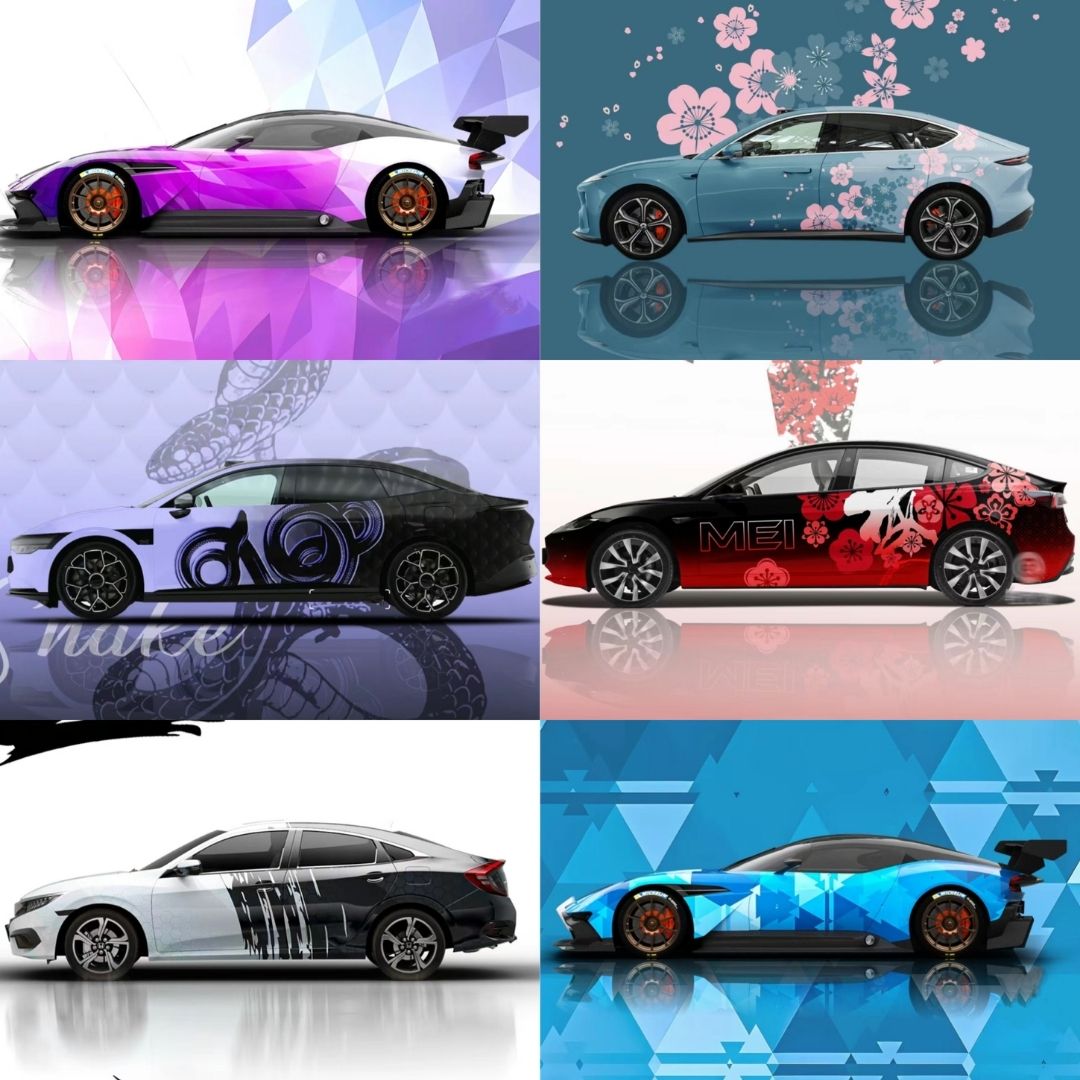Attain a Unique Custom Look for Your Car By Applying Tint Pros Vinyl Wraps
Attain a Unique Custom Look for Your Car By Applying Tint Pros Vinyl Wraps
Blog Article
The Ultimate Overview to Picking the Right Vinyl Covers for Your Project
Selecting the suitable plastic cover for your job requires a nuanced understanding of different variables that influence both appearances and capability. From comparing actors and calendared vinyl to reviewing the effects of various surfaces, each selection lugs weight in the general outcome. In addition, the importance of installment strategies can not be forgotten, as proper application is crucial for achieving longevity and visual charm - Tint Pros Vinyl Wraps. As you navigate these factors to consider, it comes to be clear that the course to a successful plastic wrap project is layered with essential decisions that merit additional expedition.

Sorts Of Vinyl Covers
When picking vinyl covers, comprehending the various kinds readily available is crucial. Plastic covers can be broadly classified into 2 major types: cast plastic and calendared vinyl. Cast vinyl is recognized for its exceptional top quality, versatility, and longevity, making it excellent for complicated surface areas and lasting applications. It is generated by casting liquid vinyl onto a film, resulting in a thinner, more conformable item that sticks well to contours and contours.
On the various other hand, calendared vinyl is produced by a procedure that entails rolling and stretching vinyl sheets. This kind is typically thicker and more economical than cast vinyl, making it appropriate for level surfaces and short-term applications. While calendared plastic provides a cost-effective option, it might not perform also on intricate designs or in severe climate conditions.
In addition, specialized vinyl covers are available, including metal, matte, and textured coatings, which can enhance looks while using distinct characteristics. Recognizing these sorts of vinyl covers will certainly enable you to make informed choices based on your task requirements, making sure optimum results in both appearance and longevity.
Choosing the Right Finish
Picking the appropriate surface for your plastic wrap is a vital element that can substantially affect the total aesthetic and performance of your job. Vinyl covers can be found in a variety of surfaces, each offering distinctive aesthetic results and efficiency features. One of the most usual finishes include gloss, matte, satin, and distinctive options.
A gloss finish provides a high-shine surface that improves shade vibrancy and depth, making it ideal for appealing designs. Gloss surfaces may be more at risk to scrapes and fingerprints. On the other hand, a matte surface uses a controlled and sophisticated appearance, minimizing glare and blemishes. This coating is commonly favored for a much more downplayed appearance however can be less immune to dirt and spots.
Satin finishes strike an equilibrium between matte and gloss, offering a soft sheen that includes elegance without overwhelming the design. Distinctive finishes, such as combed metal or carbon fiber, can include an one-of-a-kind responsive element, improving the visual appeal of your job.
Eventually, your option of coating ought to align with the desired aesthetic and the setting where the cover will certainly be applied. Think about toughness, maintenance, and the certain application to ensure optimal outcomes.
Installment Techniques
Just how can you guarantee a perfect application of plastic covers? The vital lies in meticulous prep work and technique. Begin by cleaning up the surface area completely to eliminate wax, dust, and grease, as any type of deposit can endanger adhesion. A tidy, smooth surface is necessary for optimum outcomes.
Following, collect essential devices such as a warmth weapon, squeegee, and energy blade. These tools will help in applying the plastic efficiently and cutting excess material. When using the wrap, work in sections, beginning with one edge and gently unrolling the vinyl while making use of the squeegee to eliminate air bubbles.
Heat can be useful in this process; it makes the vinyl extra flexible, enabling it to adhere to curves and contours conveniently. Workout patience and prevent rushing, as this can lead to imbalance or bubbles. In cases of difficult locations, such as around borders or manages, consider utilizing a technique called "tack and stretch" to develop a smooth fit.

Maintenance Tips
To maintain the stability and look of vinyl covers, regular care is necessary. Beginning by cleaning the wrapped surface with a gentle soap remedy and a soft sponge or microfiber cloth. Prevent extreme chemicals, as they can damage the plastic. Tint Pros Vinyl Wraps. It's ideal to wash your wrap every two weeks to eliminate dust, grime, and contaminants that can cause the wrap to shed its luster.
Dry the surface browse around these guys area thoroughly after washing, as water spots can end up being long-term if entrusted to completely dry normally. For included protection, think about using a specialized plastic wrap sealant, which can assist keep the color and stop fading from UV exposure.
Furthermore, stay clear of car park in direct sunlight for extensive periods, as extended direct exposure can bring about staining and degradation of the cover. Preferably, use a vehicle cover or park in shaded areas.
Frequently examine the wrap for any kind of indicators of training or damage. Address them quickly to avoid further deterioration if you discover any issues. Complying with these maintenance pointers will certainly make sure that your plastic wrap remains lively and extends its life expectancy, ultimately boosting the appearances of your project.

Typical Mistakes to Avoid
When it involves plastic covers, staying clear of common mistakes can considerably impact both the application process and the durability of the cover. One constant error is ignoring surface area prep work. Appropriate cleaning and priming are her response vital to make sure that the vinyl adheres successfully. Any kind of dust, oil, or old adhesive can lead to premature training or bubbling.
One more typical error is choosing the wrong type of vinyl for the particular application. Various projects require different products; for circumstances, a car wrap must use cast vinyl for toughness, while a momentary indicator may be sufficiently served by calendared plastic.
Inadequate warmth application throughout setup can also lead to issues such as creases and inappropriate adherence. Making use of a heat weapon at the right temperature is important for dealing with the vinyl, particularly in tough locations like contours or edges.
Lastly, neglecting post-installation care can reduce the lifespan of the wrap. Failing to comply with maintenance guidelines, such as preventing harsh chemicals or unpleasant cleaning tools, can result in damages. By avoiding these mistakes, you can enhance the efficiency and aesthetic allure of your plastic cover project.
Verdict
To conclude, choosing this article the suitable plastic wrap demands cautious consideration of numerous elements, including the kind of plastic, finish alternatives, and installment strategies. Proper prep work and adherence to best practices are essential for attaining optimal outcomes and ensuring the durability of the cover. By avoiding common pitfalls and making notified decisions, individuals can efficiently enhance the visual appeal and longevity of their projects with the tactical use plastic wraps.
Vinyl covers can be broadly categorized into two main types: cast plastic and calendared vinyl.On the other hand, calendared plastic is produced by a process that includes rolling and extending plastic sheets.Picking the suitable coating for your vinyl wrap is a crucial aspect that can substantially impact the overall aesthetic and performance of your project.When it comes to vinyl covers, staying clear of common risks can considerably impact both the application procedure and the durability of the wrap.In final thought, selecting the suitable vinyl cover necessitates careful factor to consider of various aspects, including the kind of plastic, coating choices, and installment methods.
Report this page